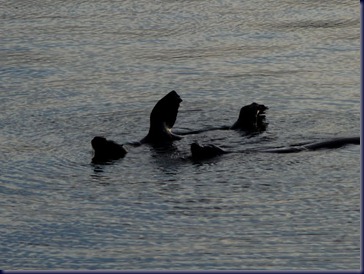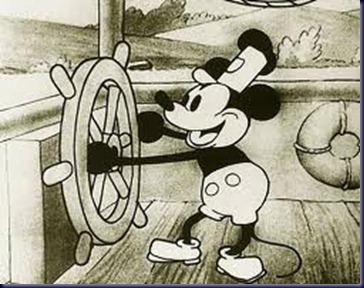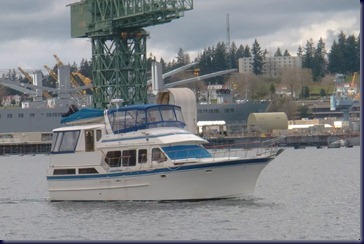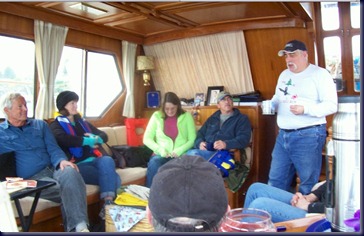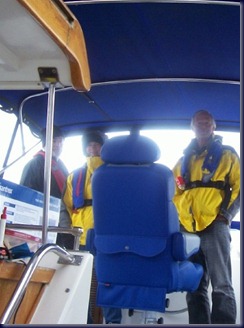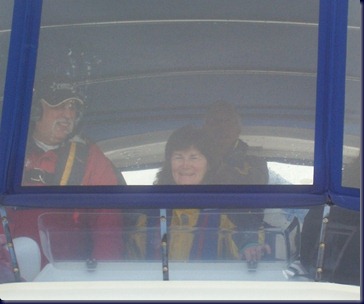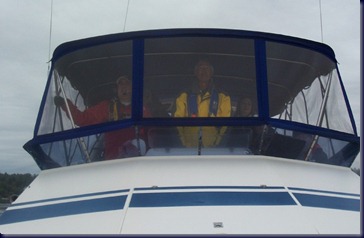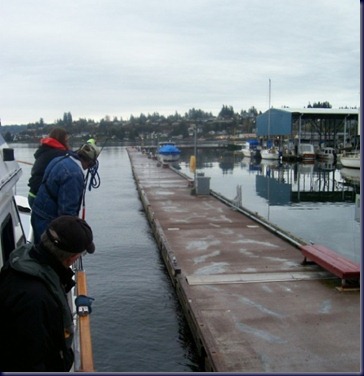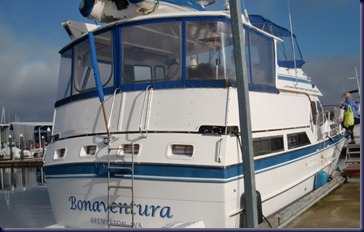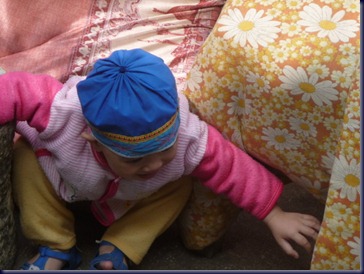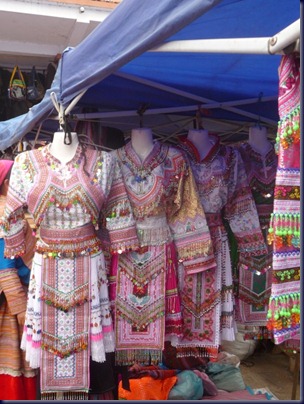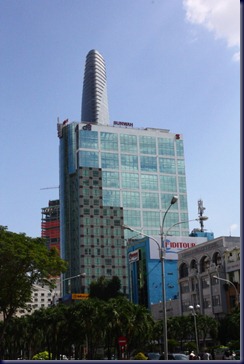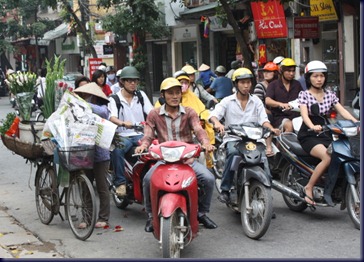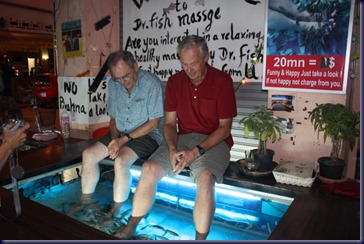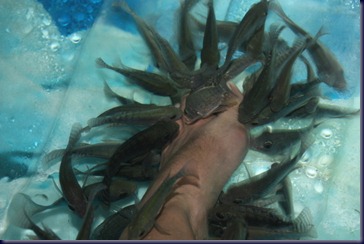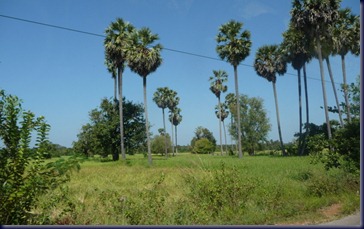
Cambodia is beautiful (what we’ve seen of it, anyway) and breaks our hearts. We’re very glad we came here.
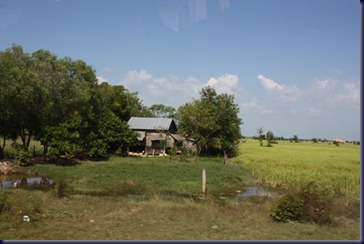
It’s an extremely poor country, nothing like the very prosperous looking Vietnam, and until 13 years ago was devastated by occupations, civil war, and the Pol Pot/Khmer Rouge disaster which lasted 3 years, 8 months and 20 days (according to our guide Rida) and resulted in the massacre of almost 2 million people out of a population of 14 million.
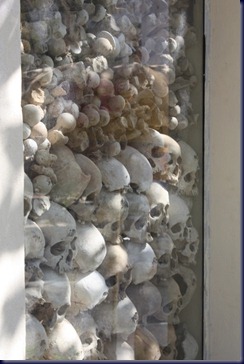
Rida says everyone in Cambodia had one or more extended family members killed during that time, with a focus on those who were wealthy, educated and had professional jobs, but including many more, and many children.
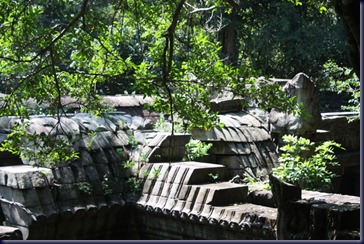
During the last 13 years Cambodia has had a stable, if corrupt, government/military/police, the doors have been opened to tourism, and the citizens are learning capitalism. At least in the cities of Phnom Penh and Siem Reap, and we hear development is beginning to occur on the coast with nice beach resorts.
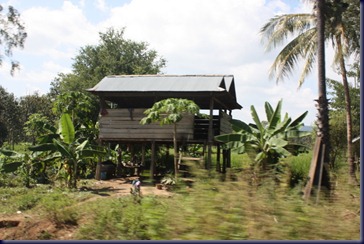
Despite all this, Rida states with not even a touch of sarcasm that “Cambodia is a very lucky country – not like our neighbor countries – because we don’t ever have any earthquakes here.” He is earnest if lacking perspective, as we know of no earthquake that ever killed 2 million people.
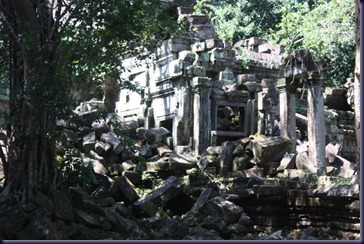
Everywhere we go, people mention Angelina Jolie, her philanthropic works here after the filming of “Tomb Raider” and her adoption of a Cambodian child. One local bar where she and her film crew hung out during the time of filming features her photo on the menu.
The U.S. dollar is the de facto currency here. We get Cambodian riels in change anytime we’re due something less than $1 (they don’t use our coins) but otherwise prices and purchases are all in U.S. currency, and even the ATM machines give U.S. dollars.
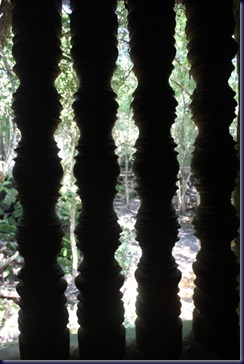
There is no potable water in Cambodia. Tourists and locals alike drink bottled water, and those who use the tap water must boil it before drinking or cooking with it.
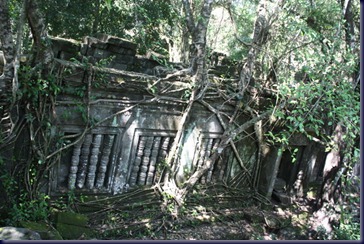
Both for reasons of tradition, having to do with keeping out bad spirits, and because of regular flooding, almost all rural homes are built on stilts 4 – 18 feet above ground.
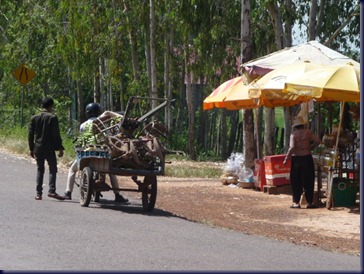
We haven’t seen Phnom Penh, the capital, but Siem Reap, the second largest city in the country, has no buildings over 4 stories, and none that go beyond functional in design.
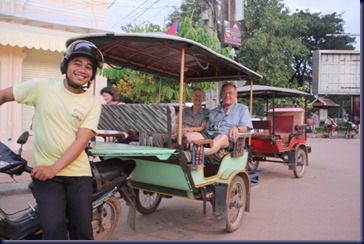 Like Vietnam, the motorcycle is the major means of transportation, though bicycles are much more common here, and the Tuk Tuk (tiny 3-wheeled carriage which carries 2 people, pulled behind a motorcycle) is used by both tourists and locals alike.
Like Vietnam, the motorcycle is the major means of transportation, though bicycles are much more common here, and the Tuk Tuk (tiny 3-wheeled carriage which carries 2 people, pulled behind a motorcycle) is used by both tourists and locals alike.
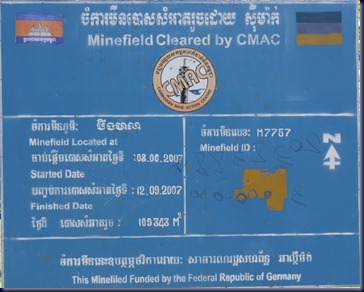
Several of the tourist sites we’ve visited outside the city are ringed with signs saying they’ve been cleaned up by the Central Mine Action Center, a NATO organization that spent years clearing the minefields that were everywhere here following the Khmer Rouge days. We’ve seen more artificial legs in 3 days here, and blinded people, than cumulatively throughout our lives.
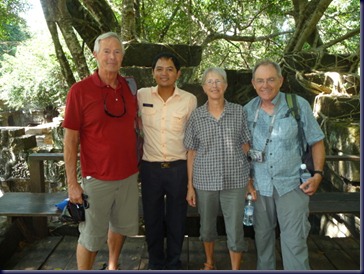
We have eaten “Khmer food” here, but have not been able to distinguish it from Vietnamese food.
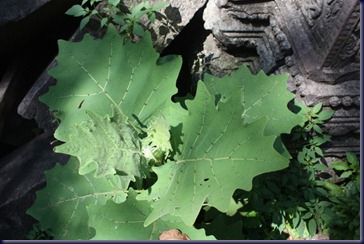
Prices here are very affordable. We’re staying in a wonderful 4-star hotel with a swimming pool and lavish gardens, and don’t know what we paid for it, but the rack rate we found on the internet is $110. The four of us have had very nice dinners in town (linen tablecloth, wine, attractive lighting and fountains) for $30 or less, including wine, for all 4 of us; main courses are typically $4-5 per person.
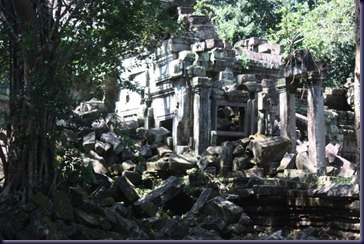
Today we went 1 1/2 hours out of the city to see the incredible “Lost Jungle” tomb, then stopped at a Killing Fields collection of human bones and photos of the Khmer Rouge massacre.
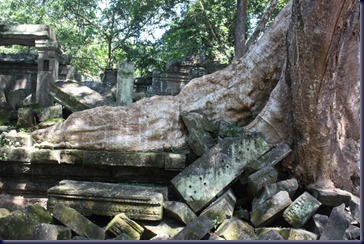
Today we leave Cambodia and fly back to Saigon with a 5-hour layover, then on to Hong Kong.
